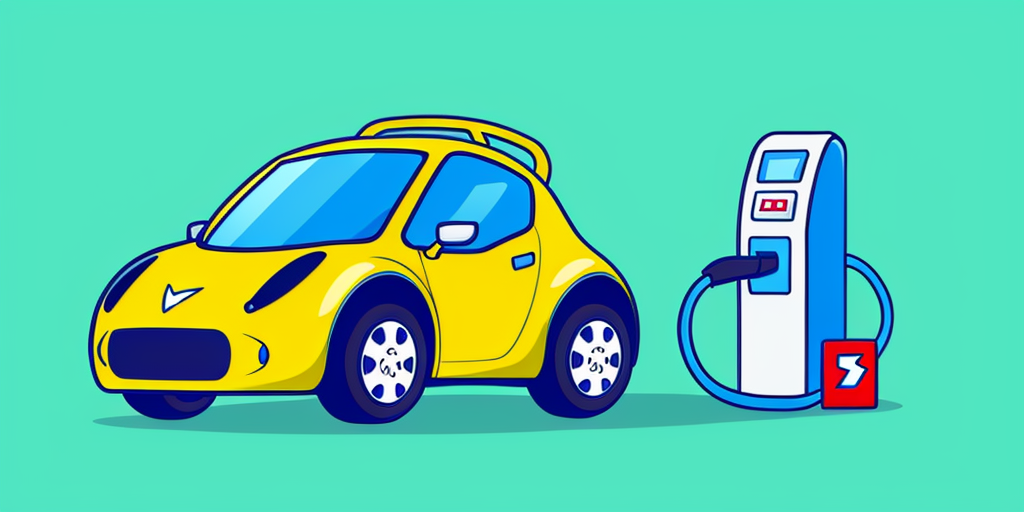Consider this: you’re driving down the highway in your Tesla, passing by gas stations feeling liberated knowing you won’t have to stop for gas anytime soon. Yet, as you look at your car’s range, you begin to wonder: how far can a Tesla go on a single charge? Electric cars (EVs) are becoming increasingly popular, and Tesla is at the forefront thanks to its stylish aesthetics and great performance. But, as any prospective EV owner might wonder, how many miles can a Tesla go?
The range, or mileage, of an electric vehicle is critical. Nobody wants to be stranded out in the middle of nowhere with a dead battery. In this article, we’ll dive into Tesla’s world and investigate the aspects that influence how far a Tesla can go. We’ll talk about Tesla’s many models and their ranges, the difficulties of long-distance travel, the influence of weather and terrain, and even the impact of carrying extra baggage.
Before we get into the nitty-gritty of Tesla’s mileage, let’s first introduce the diverse range of Tesla models. Tesla’s lineup, as of 2023, includes the sophisticated Model S, the compact and efficient Model 3, the innovative Model X, the versatile Model Y, and the futuristic Cybertruck, which is set to be launched soon. Each model brings a unique blend of design, features, and performance to the table, but for the purpose of this discussion, we’ll focus on their respective ranges and price points (prices based on 2023).

Now that we’ve covered the various Tesla models and their ranges, let’s give some real-world perspectives of these ranges, visualizing the distances between some popular city pairs in the United States. For instance, a journey from Berkeley to Lake Tahoe is roughly 178 miles. This means that any Tesla model, from the Model 3 Reel-Wheel Drive to the impressive Tri-Motor AWD Cybertruck, could easily complete this trip on a single charge, with remaining battery life to spare, particularly in the higher range models. Even in the Model 3 Reel-Wheel Drive, which has the lowest range, you’d still be able to enjoy your time at Lake Tahoe and even drive a bit around the area without recharging.
For longer trips, such as the 211-mile journey from Manhattan to Boston or the 195-mile trip from Fort Lauderdale to Orlando or Austin to Dallas, again, any Tesla model can handle these distances with ease. For example, with a Model 3 Performance, which has a range of 315 miles, you could drive from Manhattan to Boston and even make a round trip without needing to recharge. This is a testament to Tesla’s impressive EV technology, offering freedom of travel with infrequent charging needs.
Trips that are even more extensive, such as the 383-mile journey from San Francisco to Los Angeles, could be covered by the Model S and the upcoming Cybertruck’s Tri-Motor variant without needing to recharge. The Model S and Cybertruck Tri-Motor allow for plenty of leeway to navigate the city upon arrival. The high-end Cybertruck variant, with its astonishing 500+ mile range, promises even more flexibility, potentially turning the often exhausting long-distance driving into a less daunting, more environmentally-friendly endeavor.
Tesla’s portfolio not only offers the performance, luxury, and innovation associated with the brand but also provides practicality and ease of use for everyday commuting and long-distance travel. The electric vehicle revolution, led by Tesla, is bringing a level of flexibility and convenience to driving that was unimaginable a few years ago.
While Tesla’s vehicles boast impressive mileage and are capable of traversing long distances on a single charge, drivers looking to embark on long journeys should be mindful of a few challenges that can arise. These challenges can include the availability and distribution of charging stations, the time it takes to charge the vehicle, and the effects of various factors such as driving behavior, weather conditions, and vehicle load on the actual range of the vehicle. In the next section, we will delve into these challenges and provide tips for long-distance travel in a Tesla.
To begin, you’ll need to arrange your charging stops. Despite the fact that Tesla’s Supercharger network is constantly expanding, it is still necessary to plan your journey and identify charging stations along the way. Tesla is doing everything it can to make long-distance travel as easy as possible for its drivers, with over 45,000 Superchargers worldwide (and counting). However, it’s always a good idea to have a backup plan, such as looking for other charging options or planning overnight stops at hotels with charging stations. With this in mind, planning your charging stops is extremely easy for Tesla owners: by entering your destination on the touchscreen, Tesla’s Trip Planner will seamlessly calculate your route, ensuring the inclusion of Superchargers along the way (these charging stations allow you get a range of up to 200 miles in just 15 minutes of charge). As of April 2023, there are a total of 1,728 Superchargers in the USA, but the Trip Planner gives you a range of charging options, including service stations, parking areas, galleries, stores, and even Superchargers accessible to non-Tesla vehicles, among others.

Once you reach your destination, you can conveniently park for a few hours or stay overnight and recharge at one of the over 40,000 Wall Connectors at Destination Charging locations available in both urban and rural areas. These charging stations can be found at popular hotels, restaurants, and resorts, allowing you to simply plug in and enjoy your weekend adventure or afternoon activity. With the Tesla app, you can easily monitor your charge status and receive notifications when you’re ready to hit the road again, adding an extra layer of convenience to your charging experience.
It’s a real thing. It’s that persistent anxiety of running out of battery power before arriving at your destination or the next charging point. For many potential purchasers, this is a substantial hurdle to EV adoption. Tesla’s ever-improving battery technology and expanded charging infrastructure, on the other hand, are gradually reducing these concerns. Plus, in addition to using the in-car Trip Planner mentioned before, Tesla also offers a handy ‘Go Anywhere’ tool that can be used before you even set off. By selecting your vehicle’s configuration and inputting your start and end locations, the Go Anywhere tool will provide the fastest route, including Supercharger stops and recommended charge times, all customized to your specific vehicle. This feature allows for better trip planning and ensures that you’re fully prepared for your journey.
Finally, don’t overlook charging methods. While it may be tempting to charge your Tesla to 100% at each stop, this isn’t always the most time-efficient option. Tesla batteries charge faster when they’re less full, and charging times significantly slow down as the battery fills up, particularly after about 80%. Therefore, for faster turnarounds during a road trip, it’s often more time-efficient to charge up to about 80% and then get back on the road.

Additionally, consider the charging speed of each option. A Wall Connector or Destination Charging station offers up to 44 miles of range per hour charged, which makes them a good option for overnight charging at hotels or stops where you’ll be parked for a few hours. The Mobile Connector, while convenient and compatible with most standard electrical outlets, provides only up to 3 miles of range per hour charged, so it’s more suited for emergency use or overnight charging in locations without dedicated EV charging stations. On the other hand, Superchargers can give you up to 200 miles in just 15 minutes of charge, making them the best choice for mid-trip charging stops.
Furthermore, frequent, shorter charging stops can aid in the long-term health of your battery. Battery stress is minimized when the state of charge is kept between around 20% and 80%, which also aligns well with efficient trip planning. Armed with a clear understanding of charging methods and an efficient route planned out, you’ll be well-equipped to tackle those long-distance travels with confidence in your Tesla.
Understanding how many miles a Tesla can go isn’t just about the model of the car or its built-in battery capacity. Several external factors, such as driving speed, terrain, and even the weight of your luggage, can influence a Tesla’s battery range. In this section, we’re going to unravel these elements and their impact on your Tesla’s performance on the road.
Mother Nature may be a fickle friend, especially when it comes to the miles of your Tesla. Weather conditions can have a big impact on the performance and range of your EV, so it’s critical to understand how temperature, rain, and snow affect your driving experience. Extreme heat and cold can degrade your Tesla’s battery performance, resulting in reduced range. The energy required to heat the cabin and maintain battery temperature might drain the battery faster in cold conditions. Lithium-ion batteries, such as those used in Teslas, are temperature sensitive, and their efficiency falls in cooler temperatures. Similarly, in warmer weather, the air conditioning system works extra hard to keep the cabin cool, which increases energy consumption. To protect the battery from overheating, the battery management system may require additional energy.
Rain and snow can also have an impact on your Tesla’s range in a variety of ways. Wet or slick roads increase rolling resistance, which means your car must work harder to maintain speed. Because the motors must expend more energy to overcome the friction between the tires and the road, the range may be reduced. Furthermore, heavy rain or snow can affect your vehicle’s aerodynamics, contributing to increased energy consumption. Strong headwinds can lower your range by requiring the car to work harder to maintain its speed, whilst tailwinds can have the reverse effect and actually extend your range.
To deal with these weather-related issues, you must modify your driving style, maintaining a constant speed and avoiding forceful acceleration or braking when road conditions are less than optimal. You can also use Tesla’s regenerative braking system, which helps recover energy when decelerating and can help you get more range in bad weather. Keep an eye on your tire pressure as well, since properly inflated tires can aid reduce rolling resistance and ensure ideal range performance.

Your Tesla may be a technological marvel, but it is not immune to the effects of the terrain. Whether you’re driving down steep mountain roads or going off-road, you should be aware of how the terrain affects your EV’s range and performance. Let’s start with elevation changes. Climbing steep hills necessitates more energy from your Tesla’s motors, which can result in increased energy usage and decreased range. However, when driving downhill, your Tesla can use regenerative braking to recover some of that lost energy, helping to partially offset the increased consumption from the uphill climb.

Consider the off-road conditions next. While most Tesla models are not specifically designed for off-roading, they are capable of handling some mild off-road adventures. Uneven or loose ground, such as gravel, sand, or mud, on the other hand, can increase rolling resistance and energy consumption, lowering your range. Furthermore, maintaining traction on slippery or unstable terrain may necessitate extra power from your Tesla’s motors, reducing your mileage even further.
Tesla’s adjustable air suspension technology can assist customers wishing to tackle harder terrain. The adaptive air suspension can improve ground clearance and provide a smoother, more pleasant ride on difficult surfaces by altering the vehicle’s ride height and suspension stiffness.
Consider the following tips to increase your range when driving in rough terrain or on hills:
By keeping these things in mind, you may better handle difficult terrain and guarantee that your Tesla experience is both entertaining and energy-efficient.
We all like a good road trip, but those extra luggage and camping gear may truly weigh us down. Additional weight from baggage can reduce your Tesla’s range, so let’s look at how to manage these extra pounds without breaking the (battery) bank. Towing a trailer or carrying a heavy load in your Tesla adds weight, which increases the amount of energy required to move the vehicle. This increased strain on the motors consumes more battery power, resulting in a loss in range. But don’t worry, even with a trailer or a trunk full of luggage, you can still make the most of your Tesla road trip with a few smart tricks.

First and foremost, you must be aware of your Tesla’s weight and towing capacity. Each model has a maximum weight capacity that can be found in your owner’s manual or on Tesla’s website. Maintaining these restrictions not only assures your vehicle’s safety and integrity, but also helps to maintain optimal performance and range. While it may be tempting to speed down the highway with your Tesla towing a trailer, maintaining a steady, moderate speed is critical for conserving energy and maximizing range. Avoiding abrupt acceleration or harsh braking can also assist reduce energy consumption and keep your battery happy. Finally, remember to strategically plan your charging stops. Extra weight means your Tesla may require more frequent charging, so be prepared and plan your route accordingly. You can assure a stress-free road trip by discovering charging stations along your route and monitoring your energy consumption.
When it comes to understanding your Tesla’s performance, you’ll need to know a few technical terms associated with Tesla’s range and mileage:
EPA: The range of electric vehicles, including Teslas, is rated by the Environmental Protection Agency (EPA). This figure shows the vehicle’s maximum range on a single charge, as established by standardized testing protocols.
Kilowatt-hour (kWh): This is a unit of energy typically used to calculate Tesla’s battery capacity. The greater the kWh rating, the more energy the battery can store and the greater the vehicle’s range.
Regenerative braking: This is a unique characteristic of Tesla’s electric motors that aids in the recovery of energy lost during braking. When you apply the brakes, the electric motor converts some of the kinetic energy of the vehicle into electrical energy, which is then stored in the battery for later use.
BMS: The battery management system is in charge of managing the performance and health of your Tesla’s battery. It monitors the temperature, charge level, and other characteristics of the battery to maximize performance and prevent battery damage.
So how many miles can a Tesla go? The answer is a multifaceted one. The mileage of your Tesla is not only reliant on the specific Tesla model you’re driving, but also on your charging methods, journey dynamics such as the terrain and load. With the range varying from 250 to 405 miles on a single charge across different models, Tesla has a wide offering for diverse needs. Furthermore, charging infrastructure is both accessible and efficient, with Tesla’s Supercharger network, Destination Charging locations, and third-party options at your disposal. Being mindful of your route’s topography can aid in further optimizing the battery’s performance – driving uphill may consume more energy, but downhill routes offer the advantage of regenerating some power via the regenerative braking system. Considering all these factors, Tesla drivers can navigate long distances confidently, demonstrating that owning an electric vehicle is not only a sustainable choice but also a practical one for a variety of journeys.
Cold weather can reduce a Tesla’s range since it reduces battery efficiency and necessitates more energy to heat the cabin. Tesla automobiles, on the other hand, include systems that help reduce this, such as preheating the cabin while still attached to a charger.
Yes, you may charge a Tesla at home by installing a charging station in your garage or outside. You can also use a conventional 120-volt outlet, but charging periods will be slower.
The charging time of a Tesla battery varies based on the charging technique and the size of the battery. A Supercharger may deliver up to 200 miles of range in about 15 minutes, however home charging might take several hours depending on the size of the charger and the remaining charge on the battery.
Stay a while and read more posts like this
Electric vehicles (EVs) are at the forefront of creating a more sustainable and cleaner future, representing much more than mere automobiles sans gas tanks. These...
As you bask in the glory of your cutting-edge Tesla, one nagging question is lurking in your mind: "How much does it cost to charge this...
For starters, not all charging stations are the same. In fact, Tesla charging stations are classified into three varieties, each with its unique charging time and...